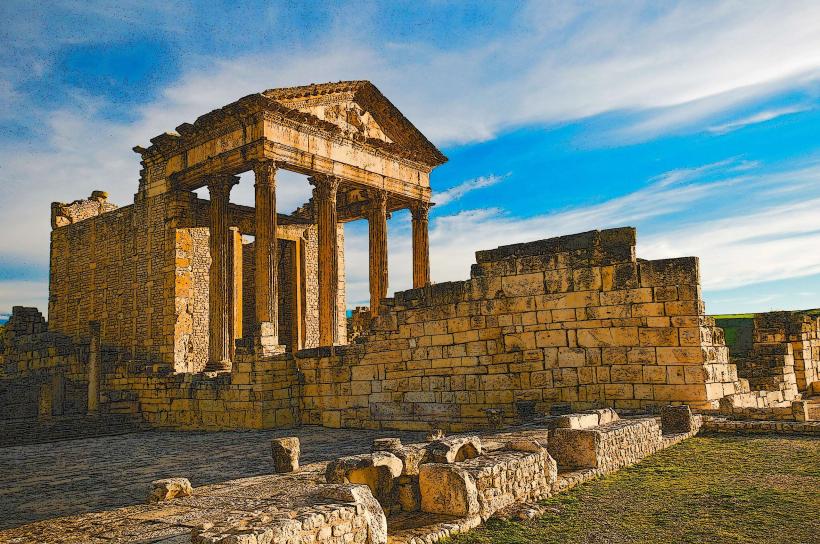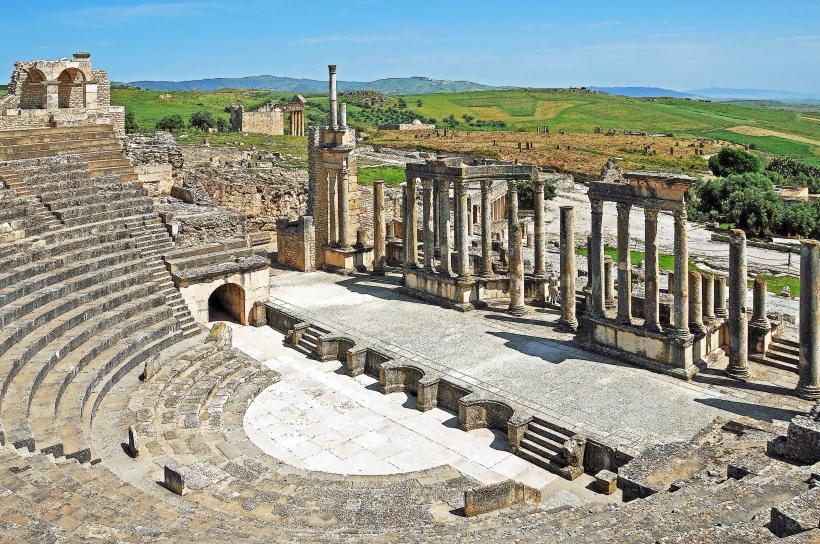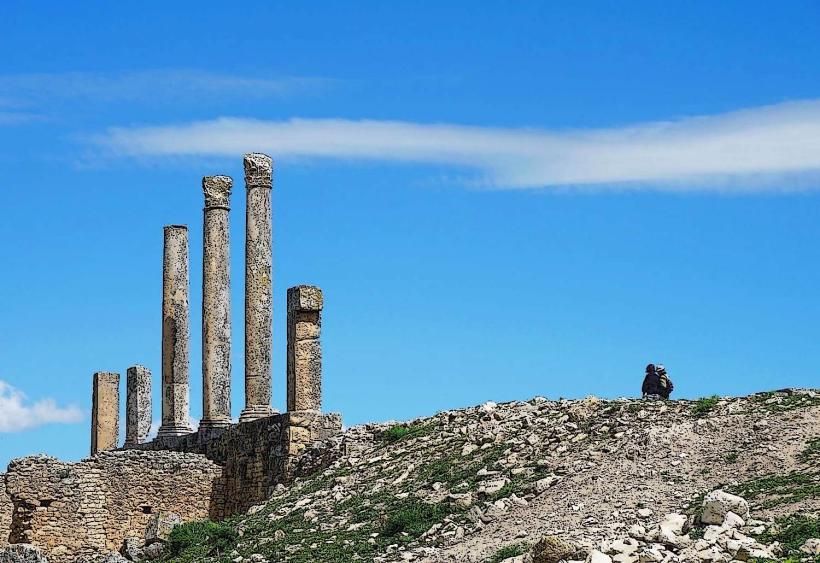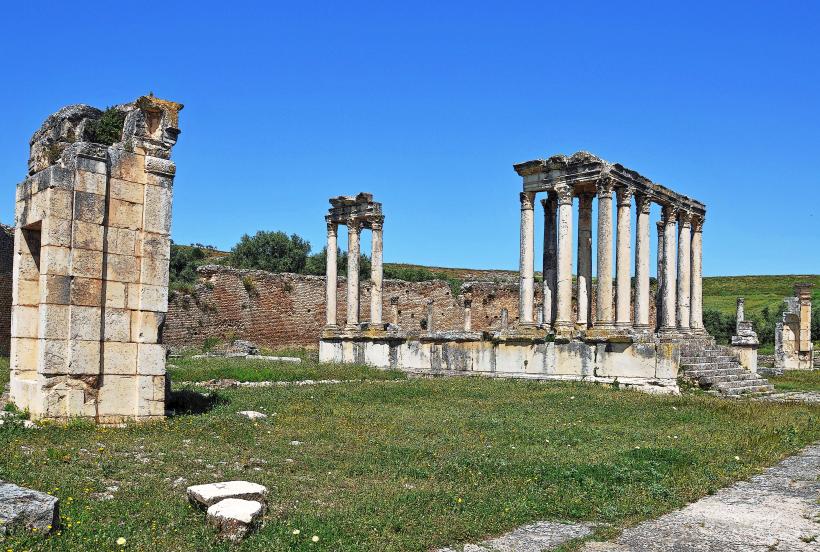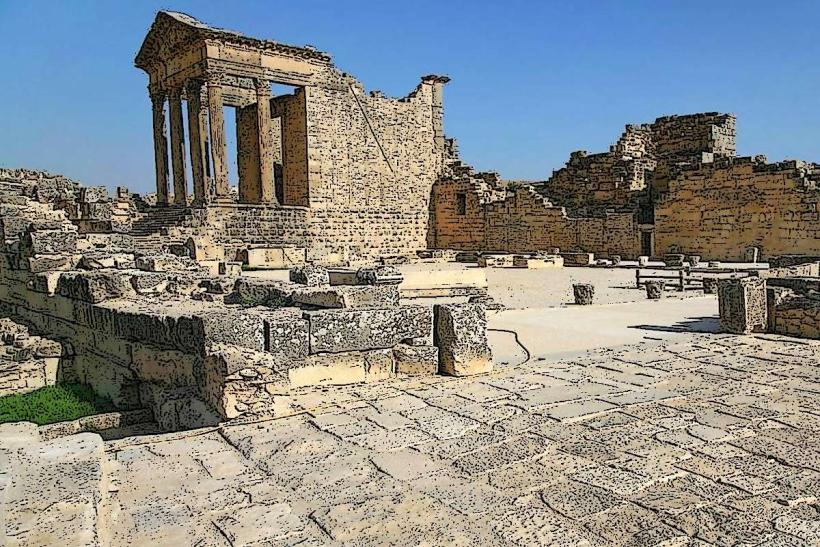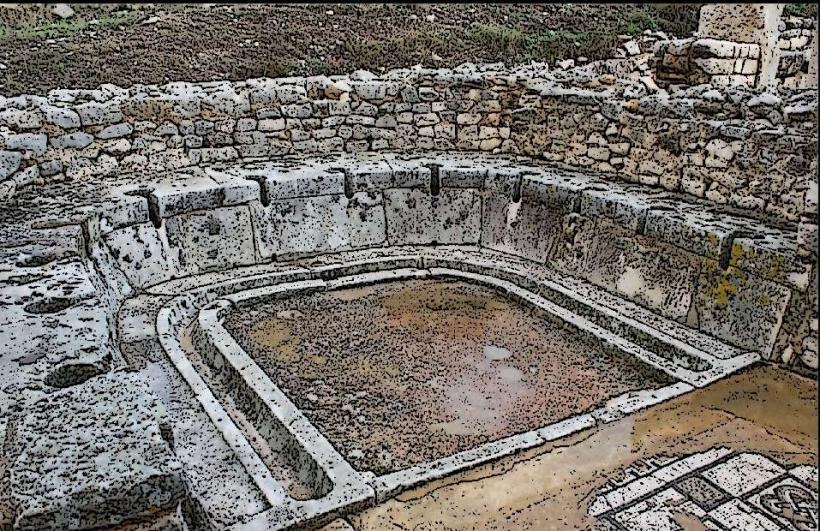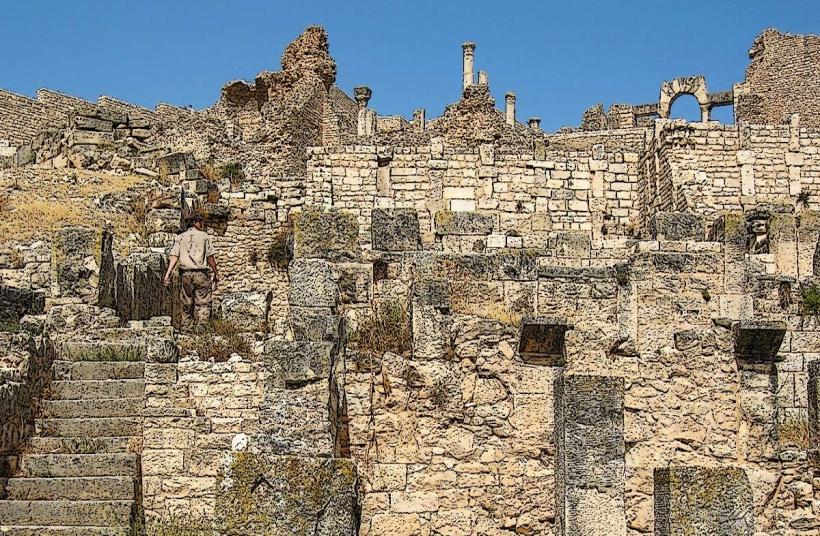Information
Landmark: Dougga MausoleumCity: Dougga
Country: Tunisia
Continent: Africa
Dougga Mausoleum, Dougga, Tunisia, Africa
Overview
The Mausoleum of Dougga, often called the Libyco-Punic Mausoleum, stands as one of North Africa’s rare treasures, its pale stone catching the sun like a beacon.This pre-Roman tomb, unlike the stately Roman ruins in Dougga, stands apart in both design and heritage, giving a rare glimpse into Numidian royal rites and Punic burial customs-its weathered stone still carrying the scent of ancient earth.Built in the 2nd century BCE, before Rome took over the region, it first stood under the warm Mediterranean sun.Purpose: A tomb built for royalty or high nobility, likely a Numidian king, with stone walls still cool to the touch.Cultural context: rooted in the Numidian and Punic (Carthaginian) tradition, with not a hint of Roman influence-like a bronze clasp bearing the patterns of its own land.The site sits just beyond Dougga’s city walls, following the old tradition of laying the dead to rest beyond the bustle of daily life.The Mausoleum of Dougga rises three stories high, its walls made from finely cut limestone blocks that feel cool and smooth to the touch, each surface adorned with intricate carvings.It’s the only design of its kind in Africa, echoing Hellenistic and eastern Mediterranean funerary styles, yet it carries distinct local touches-like carved motifs you’d never see in Greece.First.At the first level-the podium-a solid rectangular base holds up the monument, its stone edges cool and sharp to the touch.Its sides are lined with false doors and shallow niches-a familiar design in Punic and Egyptian buildings-meant to suggest a doorway into the afterlife, like stepping through a shadowed arch.Two.The middle stage, or second level, has columns wrapped around all four sides, each one appearing pulled forward like they’re leaning into the light.Pilasters-solid rectangular supports-stand in each corner, while columns with ornate capitals break up the middle level, mixing crisp Ionic lines with a touch of local flair.Between the columns, carvings or inscriptions might once have stood out, but most have worn away, leaving faint grooves in the stone.Number three.The third level-an upper chamber topped by a pyramid-is smaller but richly decorated, with corner pilasters and what may be symbolic niches or statues, their edges catching the light.A pyramid-shaped roof-either stepped or topped with a small spire-crowns it, and once a lion or horse sculpture stood proudly at the peak, catching the sunlight, though that figure has long since vanished.The small pyramid-shaped cap ties the structure to Eastern funerary symbolism, perhaps Egyptian, like the gleam of sunlit sandstone.Among the finds was a bilingual inscription-Punic and Libyan-once carved to name the person laid to rest beneath the earth.Sadly, the inscription vanished in the 19th century after being removed, though someone did jot down a careful transcription.It mentioned a man named Atban, son of Iepmatath, who was probably part of the Numidian elite-maybe even royalty, the kind who wore gold rings and spoke with quiet authority.That’s why the mausoleum is so rare-it’s one of the few pre-Roman royal monuments in the area with inscriptions sharp enough to read as if carved yesterday.The Dougga Mausoleum stands as a reminder of life before Roman rule, when Numidian leaders carved their pride and authority into towering stone walls.It blends local Berber from Libya, Punic, Hellenistic, and perhaps a touch of Egyptian style, like the carved lotus on an old stone arch.Demonstrate how local rulers embraced Mediterranean-style tombs-stone columns catching the midday sun-to project authority and signal their high status.People see it as a symbol of power, ancestry, and divine favor-like a crown resting on the brow-underscoring the deceased’s elite standing.Preservation and restoration became urgent after looters in the 19th century wreaked havoc on the structure, with British consul Thomas Reade prying stones loose and carting them away.In the early 20th century, they carefully rebuilt it with the same stone blocks, guided by old sketches and research notes worn at the edges.Today it’s a UNESCO-listed monument, still holding its shape with crisp stone edges as one of the finest surviving examples of Numidian funerary architecture.The Dougga Mausoleum still stands tall, nearly untouched by time, rising about 21 meters-roughly the height of a seven‑story building.You can spot it from far off, towering over the olive groves and the crumbling stone ruins.It still stands as a powerful reminder of pre-Roman North African heritage, its weathered stones distinct because-unlike most of Dougga’s grand ruins-it isn’t Roman at all.It reveals a rare glimpse into the traditions of the Numidian elite, like the carved stone patterns still etched along the doorway.The mix of styles reveals how indigenous cultures embraced Mediterranean artistic trends, much like carving local symbols into imported marble.

